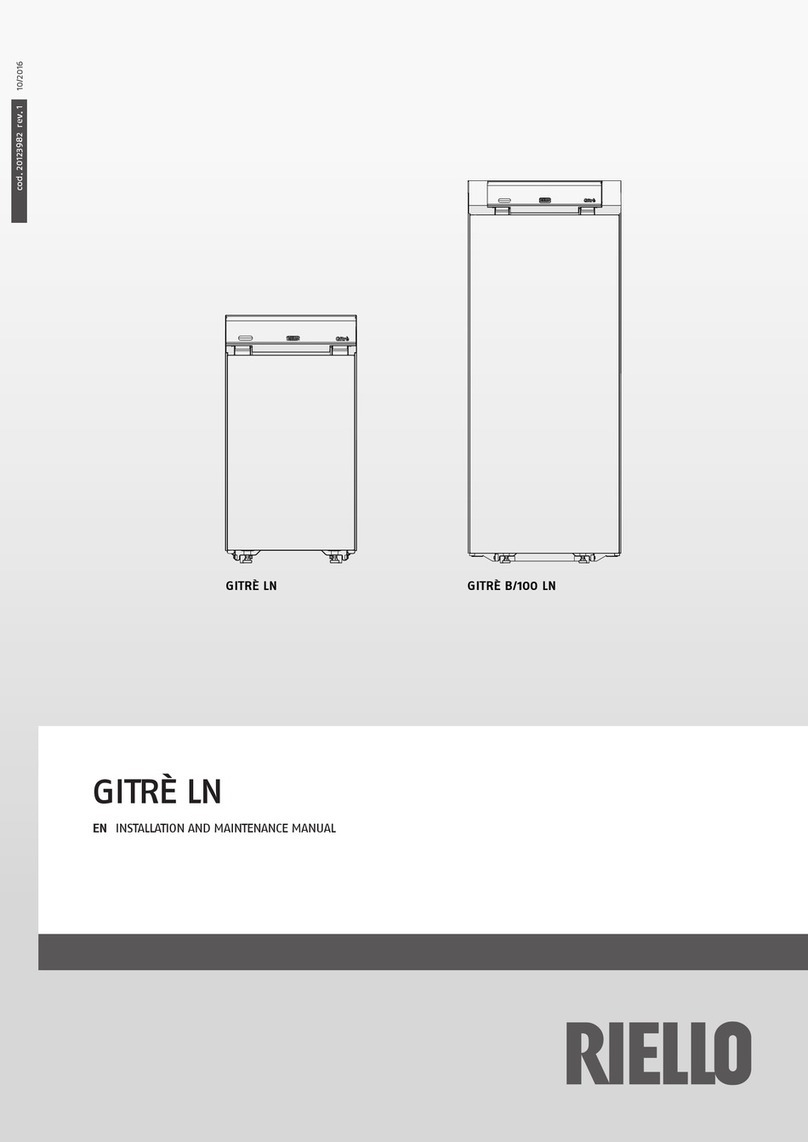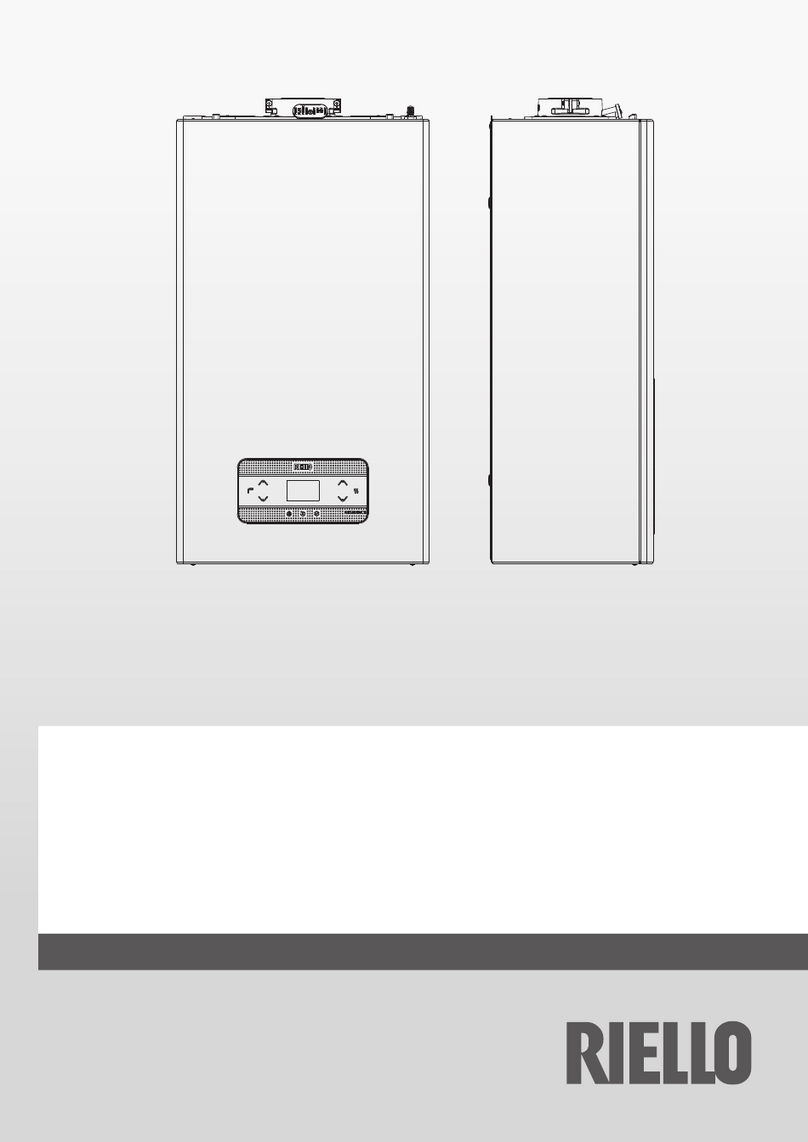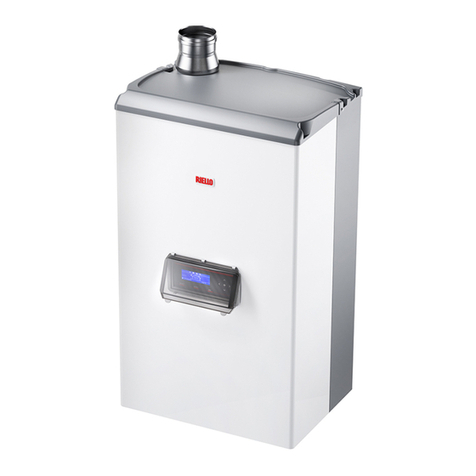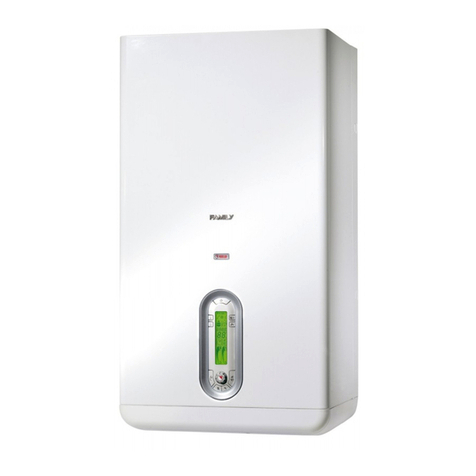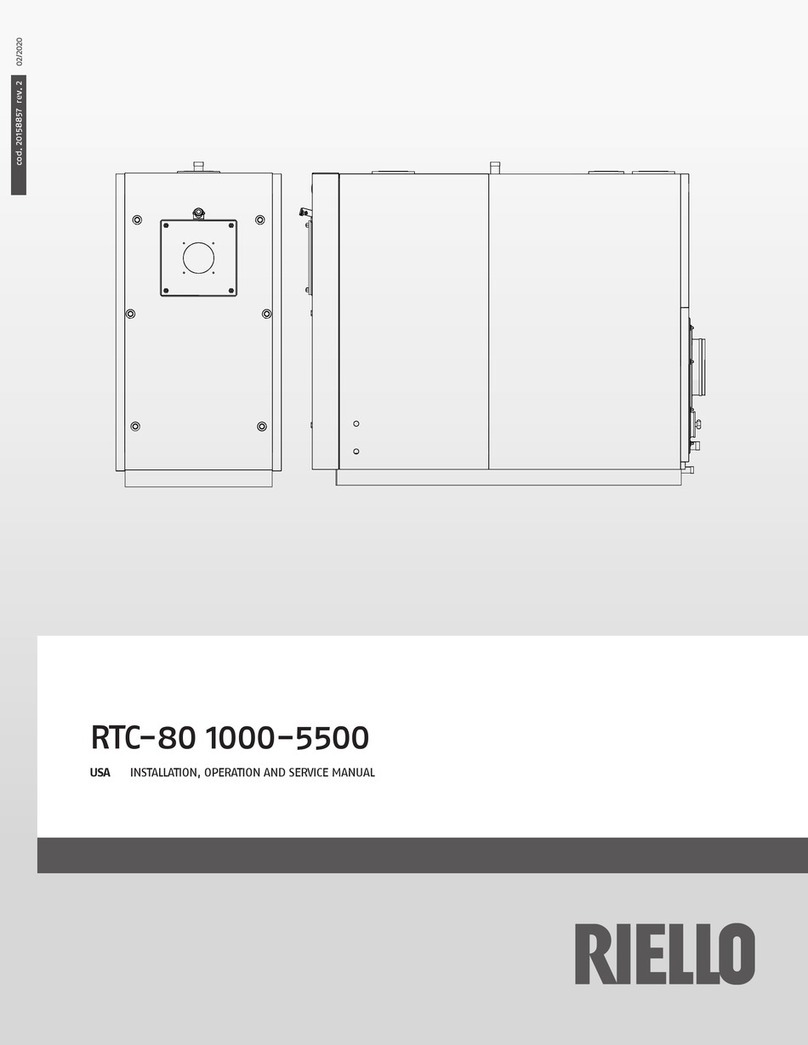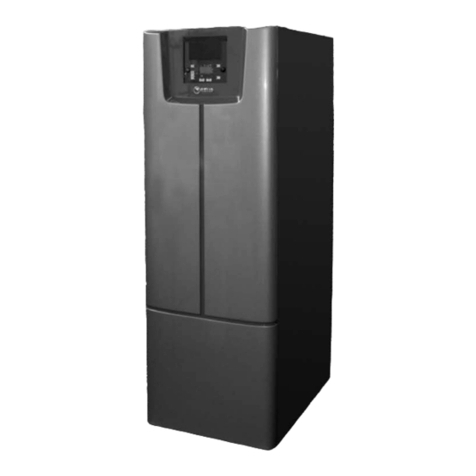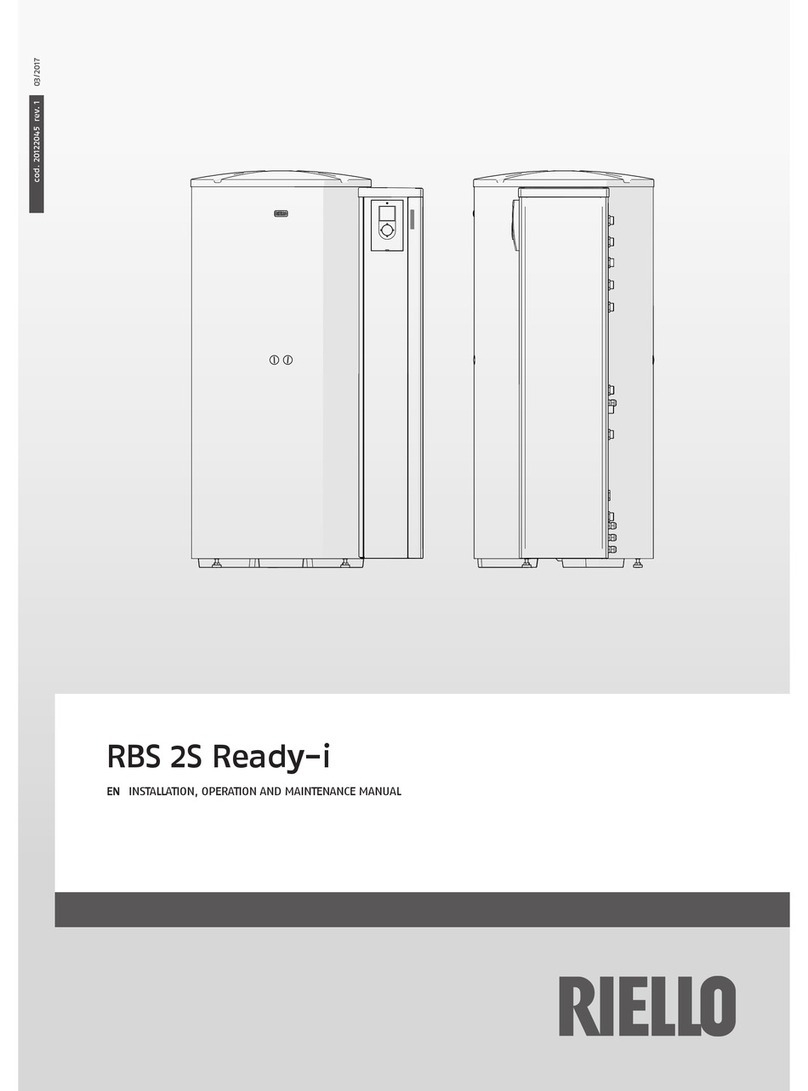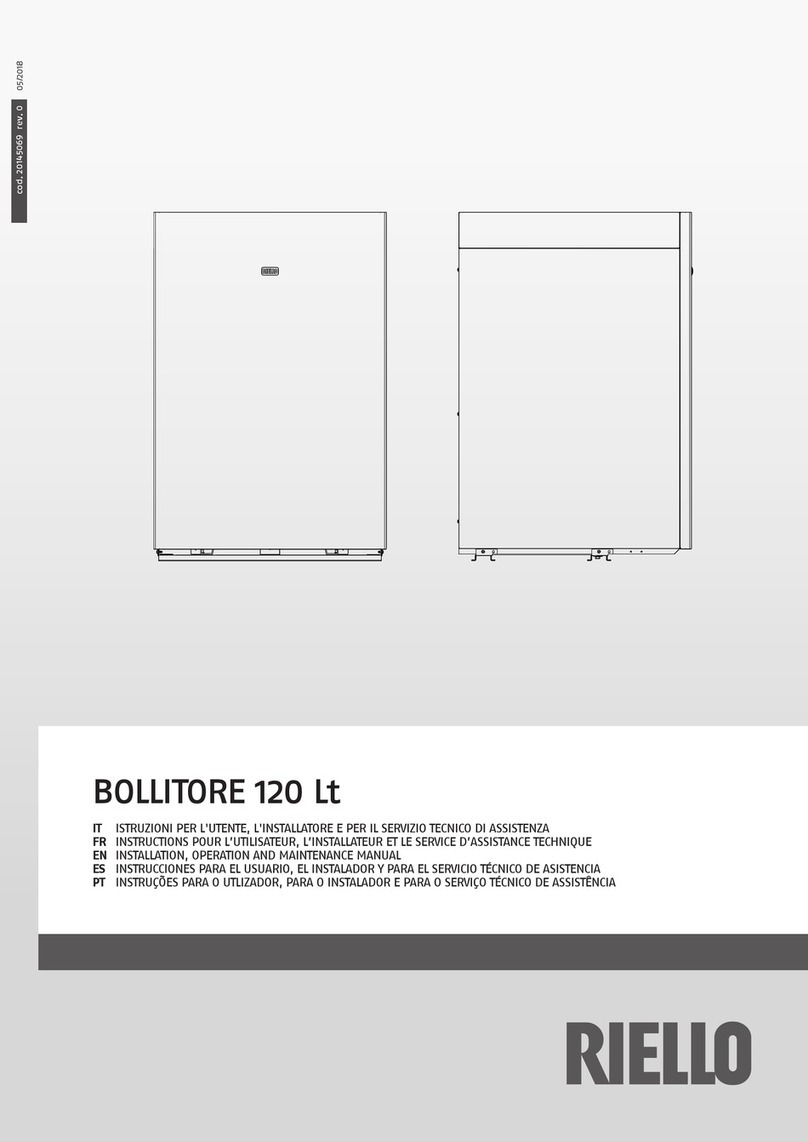
2
1.1A GAS APPLIANCES 3
1.2A ELECTRICAL SUPPLY 3
1.3A WARRANTY REGISTRATION 3
1.4A APPLIANCE COMMISSIONING CHECKLIST (UK ONLY) 3
1.5A HOW DOES IT WORK? 3
1.6A DIMENSION 3
1.7A CLEARANCES REQUIRED 3
1.8A FROST PROTECTION SYSTEM 3
1.9A CONTROL PANEL 4
2a GETTING STARTED 5
2.1A PARAMETERS ACCESS 5
2.2A PROGRAMMING THE BOILER 5
2.3A OPERATING MODE 6
2.4A OTBus REMOTE CONTROL CONNECTION 7
2.5A BOILER FAULT CODES 8
2.6A INFO MENU 8
3a HOW TO... 9
3.1A HOW TO TOP-UP THE SYSTEM PRESSURE 9
3.2A HOW TO RESET THE APPLIANCE 9
3.3A HOW TO SHUT DOWN THE SYSTEM FOR SHORT PERIODS 9
3.4A HOW TO SHUT DOWN THE SYSTEM FOR LONG PERIODS 9
3.5A HOW TO CARE FOR THE APPLIANCE 9
3.6A KEYBOARD LOCKOUT FUNCTION 9
4a WHAT IF... 10
4.1A WHAT IF I SUSPECT A GAS LEAK 10
4.2A WHAT IF I HAVE FREQUENTLY TO TOP-UP THE SYSTEM10
4.3A WHAT IF THE APPLIANCE IS DUE ITS ANNUAL SERVICE 10
4.4A WHAT IF I NEED TO CALL AN ENGINEER 10
3.7A INTERFACE STAND BY 10
1 INTRODUCTION 11
2 DESIGN PRINCIPLES AND OPERATING SEQUENCE 12
2.1 PRINCIPLE COMPONENTS 12
2.2 MODE OF OPERATION (AT REST) 12
2.3 MODE OF OPERATION (HEATING) 12
2.4 MODE OF OPERATION (HOT WATER) 12
2.5 SAFETY DEVICES 12
2.6 TECHNICAL DATA 13
2.7 PUMP DUTY 15
2.8 HOW TO FREE THE PUMP 15
3 GENERAL REQUIREMENTS (UK) 16
3.1 RELATED DOCUMENTS 16
3.2 LOCATION OF APPLIANCE 16
3.3 GAS SUPPLY 16
3.4 FLUE SYSTEM 16
3.5 AIR SUPPLY 16
3.6 WATER CIRCULATION 16
3.7 ELECTRICAL SUPPLY 17
3.8 MOUNTING ON A COMBUSTIBLE SURFACE 17
3.9 TIMBER FRAMED BUILDINGS 17
3.10 WATER TREATMENT 17
3.11 SHOWERS 17
3E GENERAL REQUIREMENTS (EIRE) 17
3.1E RELATED DOCUMENTS 17
3.2E LOCATION OF APPLIANCE 17
3.3E GAS SUPPLY 18
3.4E FLUE SYSTEM 18
3.5E AIR SUPPLY 18
3.6E WATER CIRCULATION 18
3.7E ELECTRICAL SUPPLY 18
3.8E MOUNTING ON A COMBUSTIBLE SURFACE 18
3.9E TIMBER FRAMED BUILDINGS 18
3.10E WATER TREATMENT 18
3.11E SHOWERS 18
3.12E DECLARATION OF CONFORMITY 18
4 INSTALLATION 19
4.1 PREPARATION FOR MOUNTING THE APPLIANCE 19
4.2 FITTING THE FLUE 19
4.3 CONNECTING THE GAS AND WATER (“FIG. 18”) 21
4.4 INSTALLATION OF CONDENSATE DRAIN PIPE 21
4.5 I
NSTRUCTION FOR CONDENSATION EXHAUST CONNECTION
22
4.6 ELECTRICAL CONNECTIONS 22
4.7 CASING REMOVAL 22
4.8 CONNECTING THE MAINS (230V) INPUT 22
5 OPERATION 23
5.1 ACCESS TO THE PARAMETERS 23
5.2 CONTROL PANEL 23
5.3 SETTINGS MENU TREE STRUCTURE 24
5.4 STARTING THE BOILER 25
5.5 BOILER CONFIGURATION 26
5.6 FIRST COMMISSIONING 28
5.7 VENT CYCLE 28
5.8 OPERATING STATUS 28
6 COMMISSIONING 31
6.1 GAS SUPPLY INSTALLATION 31
6.2 THE HEATING SYSTEM 31
6.3 INITIAL FILLING OF THE SYSTEM 31
6.4 PRE-OPERATION CHECKS 31
6.5 INITIAL LIGHTING 31
6.6 CHECKING GAS PRESSURE AND COMBUSTION ANALYSIS 31
6.7 FINAL FLUSHING OF THE HEATING SYSTEM 31
6.8 SETTING THE FLOW OUTLET TEMPERATURE 31
6.9 SETTING THE SYSTEM DESIGN PRESSURE 31
6.10 REGULATING THE CENTRAL HEATING SYSTEM 32
6.11 FINAL CHECKS 32
6.12 INSTRUCTING THE USER 32
7 SERVICING INSTRUCTIONS 32
7.1 GENERAL 32
7.2 ROUTINE ANNUAL SERVICING 32
7.3 CLEANING THE PRIMARY HEAT EXCHANGER 33
7.4 CLEANING THE BURNER 33
7.5 CLEANING THE SIPHON 33
7.6 ELECTRODES VERIFICATION 33
7.7 CLAPET 33
7.8 REPLACEMENT OF COMPONENTS 33
7.9 COMPONENT REMOVAL PROCEDURE 33
7.10 CASING REMOVAL (Fig. 26) 34
7.11 PUMP ASSEMBLY (Fig. 27) 34
7.12 SAFETY VALVE (Fig. 28) 34
7.13 LOWER ATOMATIC AIR RELEASE VALVE (Fig. 27) 34
7.14 WATER PRESSURE TRANSDUCER (Fig. 29) 34
7.15 DHW THERMISTOR (Fig. 29) 34
7.16 FLOW THERMISTOR
(FIG. 3 - POS. 7) 34
7.17 RETURN THERMISTOR
(FIG. 3 - POS. 21) 34
7.18 PRINTED CIRCUIT BOARD
(FIG. 30) 34
7.19 GAS VALVE
(FIG. 31) 35
7.20 ELECTRODES
(FIG. 32) 35
7.21 EXPANSION VESSEL (FIG. 33) 35
7.22 HEAT EXCHANGER (FIG. 34) 35
7.23 COMBUSTION UNIT (FIG. 36) 36
7.24 FAN AND MIXER (FIG. 37) 36
7.25 DIVERTER VALVE ASSEMBLY (FIG. 38) 36
7.26 REMOVING THE SIPHON (FIG. 39) 37
7.27 REPLACING INTERFACE 37
7.28 REPLACING PCB OR INTERFACE 37
8 CHECKS, ADJUSTMENTS AND FAULT FINDING 38
8.1 CHECKING APPLIANCE OPERATION 38
8.2 APPLIANCE MODES OF OPERATION 38
8.3 CHECKING THE CO2AND ADJUSTING THE GAS VALVE 38
8.4 CHECKING THE EXPANSION VESSEL 39
8.5 EXTERNAL FAULTS 39
8.6 ELECTRICAL CHECKS 40
8.7 FAULT FINDING 40
8.8 COMPONENT VALUES & CHARACTERISTICS 40
8.9 ADJUSTMENTS 40
8.10 GAS VALVE CALIBRATION 41
8.11 RANGE RATED 41
8.12 SETTING THE THERMOREGULATION 41
8.13 LIGHTS AND FAULTS 42
8.14 BOILER FAULT CODES 43
8.15 INFO MENU 44
8.16 EMBEDDED CLOCK 45
8.17 CLOCK FUNCTIONALITY 45
8.18 PROGRAMMING THE EMBEDDED CLOCK 45
9 WIRING DIAGRAMS 46
9.1 EXTERNAL WIRING 46
9.2 OTHER DEVICES 46
9.3 OTBUS CONNECTION 46
10 LPG INSTRUCTIONS 48
10.1 RELATED DOCUMENTS 48
10.2 TECHNICAL DATA 48
10.3 GAS CONVERSION 48
10.4 COMPLETION 48

